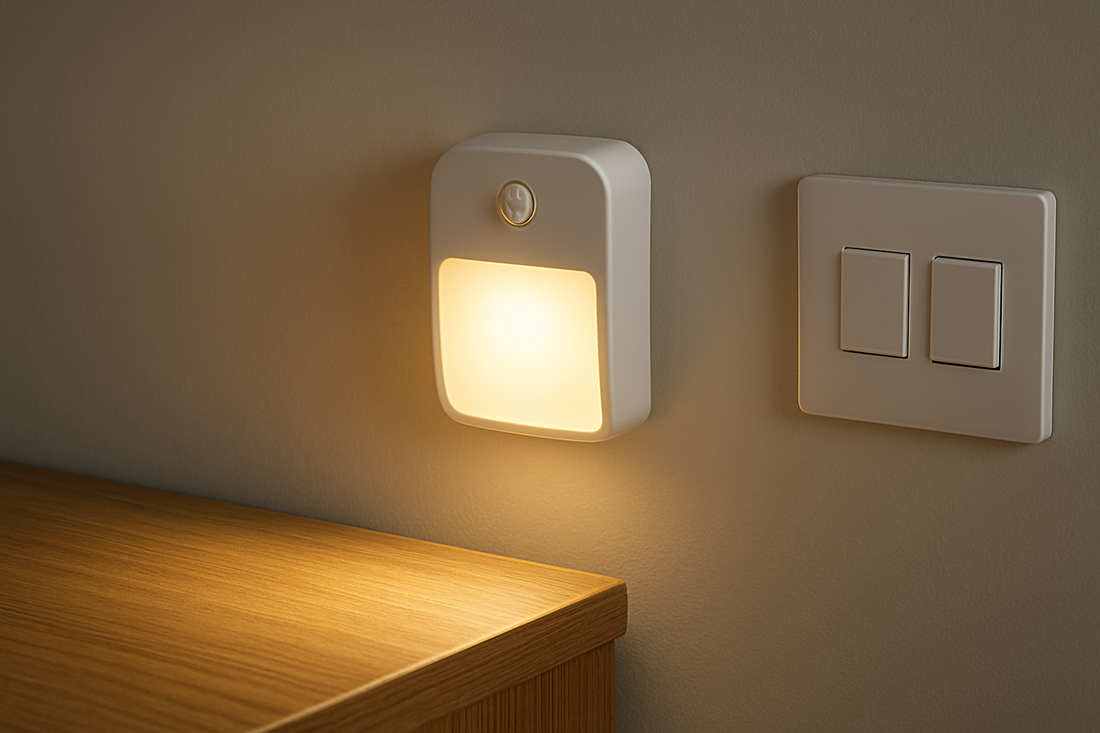
How to Choose the Right Motion Sensor Light for Your Home
Share
Lighting is one of those everyday essentials we rarely think about until it becomes inconvenient. Maybe it’s walking into a dark hallway at night, fumbling with switches when your hands are full, or wasting energy by leaving lights on when you’re not even in the room. That’s where motion sensor lights come in. They solve these small annoyances while saving you money and adding a layer of safety to your home. But with so many options out there, how do you actually choose the right motion sensor light?
The answer isn’t as simple as picking the first one you see online. Your space, lifestyle, and goals all play a role in which model will work best. In this guide, we’re going to explore everything you need to know about motion sensor lights—from the different types and features to real-world examples of how they can transform your home. By the end, you’ll know exactly how to choose the right motion sensor light for your unique needs.
Why Motion Sensor Lights Are Worth It
Before we dive into the details, let’s set the stage. Motion sensor lights aren’t just a tech upgrade for the sake of it. They provide practical benefits you’ll notice from day one.
First, they save energy by only turning on when needed. If you’ve ever left a light on all night in the kitchen or bathroom, you know how fast that can add up on your energy bill. Second, they improve safety. Whether you’re avoiding tripping hazards indoors or deterring intruders outdoors, motion-activated lighting provides reassurance. And finally, they add convenience. Imagine never having to flip a switch while carrying groceries again.
So when you decide to choose the right motion sensor light, you’re not just buying a gadget—you’re upgrading your entire home experience.
Understanding the Types of Motion Sensor Lights
Indoor Motion Sensor Lights
Indoor models are typically smaller, sleeker, and designed for hallways, closets, bathrooms, or under cabinets. They’re ideal for places where you want quick illumination without fuss. A good example is the Rechargeable Motion Sensor LED Night Light from Clixiora, which works perfectly in tight spaces without requiring wires or complex installation.
Outdoor Motion Sensor Lights
These are built for durability. They’re usually weather-resistant, brighter, and designed to cover larger areas. Outdoor models are perfect for driveways, porches, and backyards. If your goal is security, this is where you want to invest.
Portable Motion Sensor Lights
This category includes rechargeable, wireless lights that you can move around. They’re great if you rent your home, since you don’t want permanent fixtures but still need functionality. Portability also means you can experiment with placement until you find the sweet spot.
Features to Look for When Choosing the Right Motion Sensor Light
Brightness and Light Quality
One of the most important factors is brightness, usually measured in lumens. A hallway may only need 100–200 lumens, while an outdoor driveway might require 1,000 or more. At the same time, quality matters. A harsh, cold LED might technically light up the room but won’t create a welcoming vibe. Look for models with adjustable brightness or warm color tones if comfort is a priority.
Sensor Range and Detection Angle
How far the sensor reaches and how wide the detection angle is can make or break your experience. If you’re placing a light at the end of a hallway, you’ll want it to activate as soon as you step into range, not halfway down. A wide-angle sensor is especially useful for larger rooms or outdoor areas.
Power Source
Here’s where the big debate comes in: rechargeable vs. battery-powered vs. wired. Rechargeable models are convenient and eco-friendly, but they do require you to remember to charge them. Battery-powered options are simple and portable but can add up in cost over time. Wired models are low-maintenance but not as renter-friendly. When you choose the right motion sensor light, this decision often depends on your living situation.
Installation and Design
If you rent, you’ll probably want adhesive-backed or magnetic lights that don’t require drilling. If you own your home, hardwired options might be worth the effort. Design also matters—some motion sensor lights blend into the background while others double as decor.
Extra Features
Some modern lights come with features like dimming, timers, or smart home integration. Do you need to control the light with an app? Or is simple on/off enough? Thinking about this in advance prevents you from overpaying for features you won’t actually use.
Practical Uses for Motion Sensor Lights
In the Hallway
This is one of the most popular spots for motion sensor lights. Instead of fumbling for a switch at 2 a.m., a soft glow guides you safely. It’s subtle but makes a huge difference.
In Closets or Cabinets
Small, enclosed spaces are notoriously underlit. A rechargeable motion sensor LED tucked inside a wardrobe or under a kitchen cabinet makes organization so much easier.
In Bathrooms
If you share a home, you know the struggle of someone turning on a bright light in the middle of the night. Motion-activated night lights solve that problem by giving you just enough illumination without waking everyone up.
Outdoors
From scaring off raccoons to lighting the way up your front steps, outdoor motion sensor lights bring peace of mind. If security is on your mind, this is where to invest in a higher-end option.
Mistakes to Avoid When Choosing the Right Motion Sensor Light
One of the biggest mistakes is going too cheap. While budget-friendly lights can be great, ultra-low-cost options often have poor sensors or weak batteries that end up frustrating you. Another mistake is ignoring the detection range. A motion sensor light with a narrow angle might not pick up your movements consistently.
And finally, don’t underestimate placement. Even the best light won’t work well if you put it too high, too low, or facing the wrong direction.
How to Maximize the Value of Your Motion Sensor Lights
Choosing the right motion sensor light is just the first step. Once you’ve got your lights, placement and maintenance are key. Test different locations to see where they pick up movement most effectively. Recharge or replace batteries regularly so you’re not left in the dark. And consider layering your setup—combine hallway lights with under-cabinet options and outdoor security lights for a seamless experience.
The best setups don’t just illuminate a space; they make your home feel smarter and more functional.
Why the Rechargeable Motion Sensor LED Night Light is a Great Starting Point
If you’re overwhelmed by choices, start small. The Rechargeable Motion Sensor LED Night Light is an affordable and flexible option. It’s perfect for renters, easy to install, and versatile enough for hallways, closets, or even under furniture. For many people, this single product is enough to experience the benefits firsthand and decide if you want to expand your setup.
Living Smarter, Not Harder
At the end of the day, motion sensor lights aren’t about gadgets for the sake of it. They’re about removing tiny inconveniences and making your daily routines smoother. When you choose the right motion sensor light, you’re not just improving visibility—you’re upgrading your lifestyle.
The best part? You don’t need to overhaul your entire home. Start with one light in the hallway, the bathroom, or outside your door. Notice how much easier those small moments become. From there, you can expand your system based on what feels right for your space.
Final Thoughts
So, how do you choose the right motion sensor light? Think about your space, your needs, and your lifestyle. A bright, weatherproof model might be perfect for outdoors, while a compact rechargeable light fits a closet or hallway better. Factor in brightness, range, power source, and design—and don’t be afraid to start with one and build from there.
Motion sensor lights are one of those small upgrades that pay off immediately. They save energy, increase safety, and make your home more enjoyable to live in. And the good news is that with so many options, there’s a perfect fit for every household.
Now I’d love to hear from you: Have you tried motion sensor lights before? Do you have a favorite model or feature that makes your setup better? Drop your thoughts in the comments—your insights might just help someone else choose the right motion sensor light for their home.
